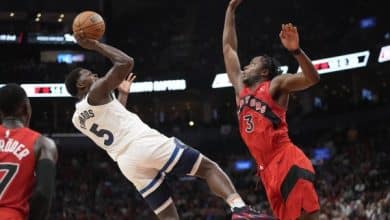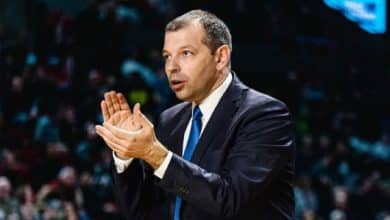
Jaylen Brown had just intercepted a ball and scored a big dunk to extinguish the Suns' last hopes. While Frank Vogel called a timeout, Royce O'Neale inherited the leather and wanted to take a shot a good two meters from the 3-point line.
It's there that Joe Mazzulla, arrived on the floor since the game was officially stopped, tried… to counter him. “ I did it last year, we've done it many times, so I don't care. In the end, it's about the mindset and approach you have. It's in the rules of the game “, displays the Celtics coach without batting an eyelid.
Seeing this kind of gesture is now common at the slightest whistle or request for a time-out. The idea being to hinder any dynamic of an opposing player who would try to reassure himself with his shot by trying his luck during a stoppage in play. Common among players, this “defensive” gesture is much less so coming from the from a coach.
A final zero score for Royce O'Neale
But Joe Mazzulla takes responsibility for his intervention all the more because he knew where Royce O'Neale was with his address. “ I saw a guy try to shoot, he hadn't made a single one, I didn't want him to go on the bench feeling better. Gary (Washburn, Boston Globe) asked me about this a month ago and it's the bench rule: the guys don't shoot in front of our bench before joining theirs to get good sensations. If I ask the guys to challenge, the staff must do the same thing “, justifies the Celtics technician.
And even if the match is already over like this sequence: his team had 18 points with three minutes to play. And the player opposite finished without converting a single shot (0/7 in total, including 0/5 behind the arc).
“ It's about setting the tone. One of the little faults is thinking that a guy will benefit from a free shot, it doesn't work like that. If we want the team to meet this standard, it’s the same for the staff. We sometimes failed to do so. I asked the staff to be accountable for this », finishes the coach.












